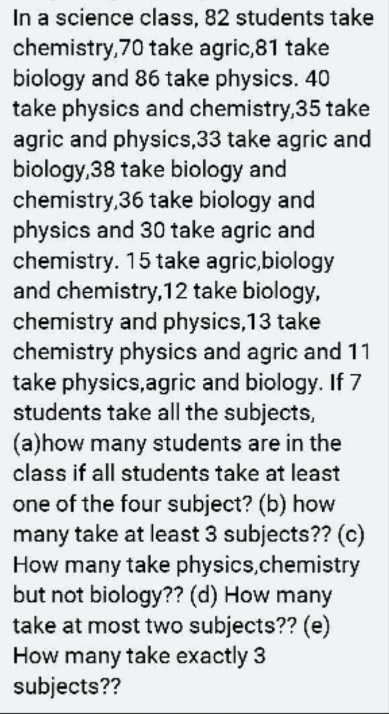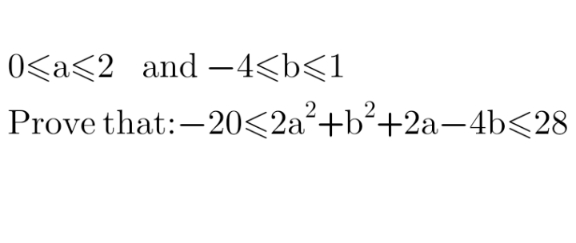
AlgebraQuestion and Answers: Page 227
Question Number 129979 Answers: 3 Comments: 0
Question Number 129841 Answers: 1 Comments: 2
Question Number 129832 Answers: 1 Comments: 2

Question Number 129687 Answers: 1 Comments: 0
Question Number 129677 Answers: 0 Comments: 2

Question Number 129663 Answers: 0 Comments: 4
Question Number 129622 Answers: 1 Comments: 2
Question Number 129607 Answers: 2 Comments: 0
Question Number 129595 Answers: 2 Comments: 0
Question Number 129489 Answers: 2 Comments: 0
Question Number 129394 Answers: 3 Comments: 0
Question Number 129364 Answers: 1 Comments: 0

Question Number 129343 Answers: 0 Comments: 1
Question Number 129320 Answers: 1 Comments: 1

Question Number 129310 Answers: 0 Comments: 1

Question Number 129300 Answers: 2 Comments: 0
Question Number 129279 Answers: 0 Comments: 3
Question Number 129255 Answers: 0 Comments: 1
$$\mathrm{x}\left(\mathrm{1}−\frac{\mathrm{1}}{\mathrm{x}}\right)^{\mathrm{x}} =? \\ $$
Question Number 129235 Answers: 2 Comments: 2
Question Number 129148 Answers: 0 Comments: 1
Question Number 128942 Answers: 2 Comments: 0
Question Number 128932 Answers: 1 Comments: 3

Question Number 128918 Answers: 0 Comments: 2

Question Number 128903 Answers: 2 Comments: 0
Question Number 128850 Answers: 1 Comments: 0
Question Number 128715 Answers: 0 Comments: 1
Pg 222 Pg 223 Pg 224 Pg 225 Pg 226 Pg 227 Pg 228 Pg 229 Pg 230 Pg 231
